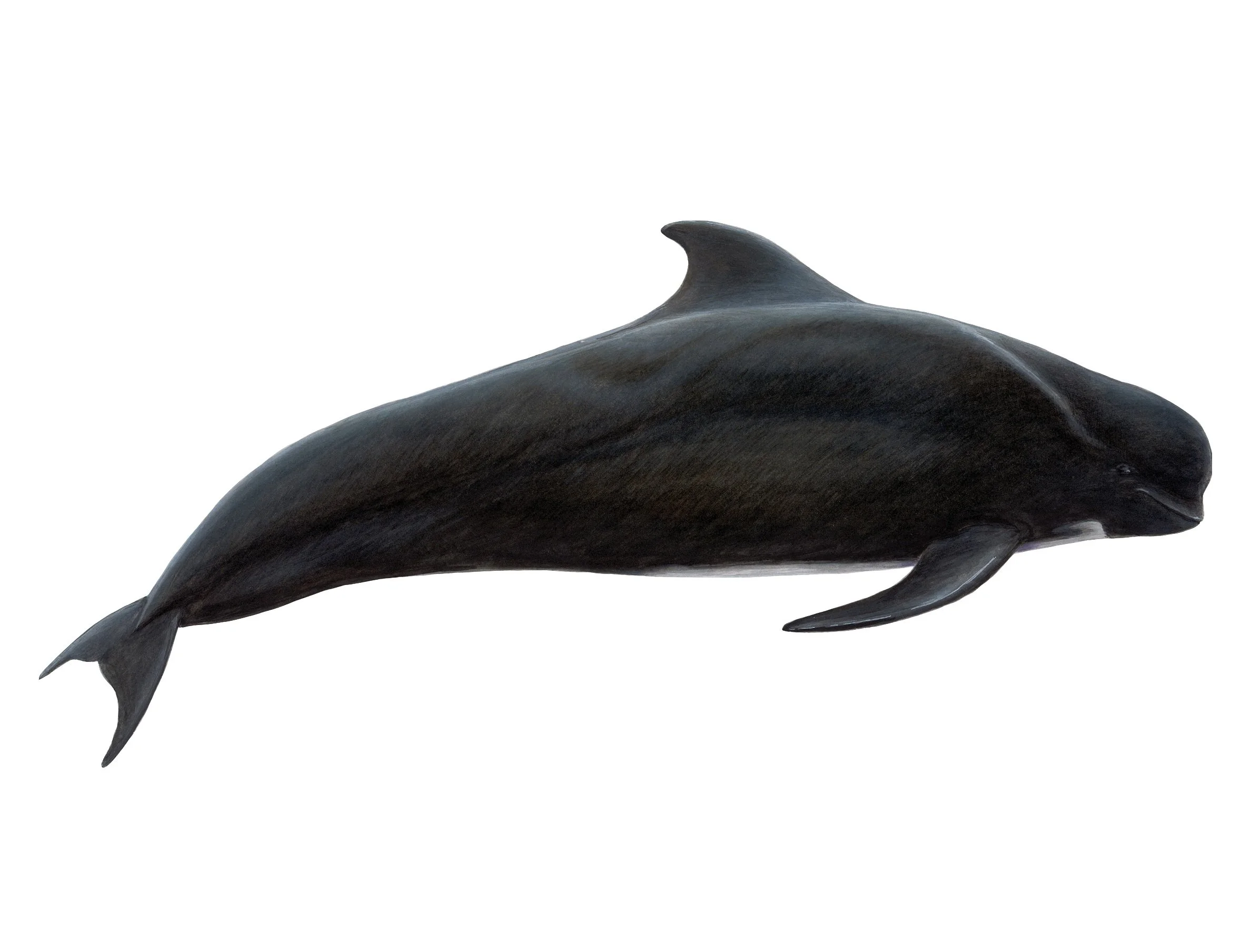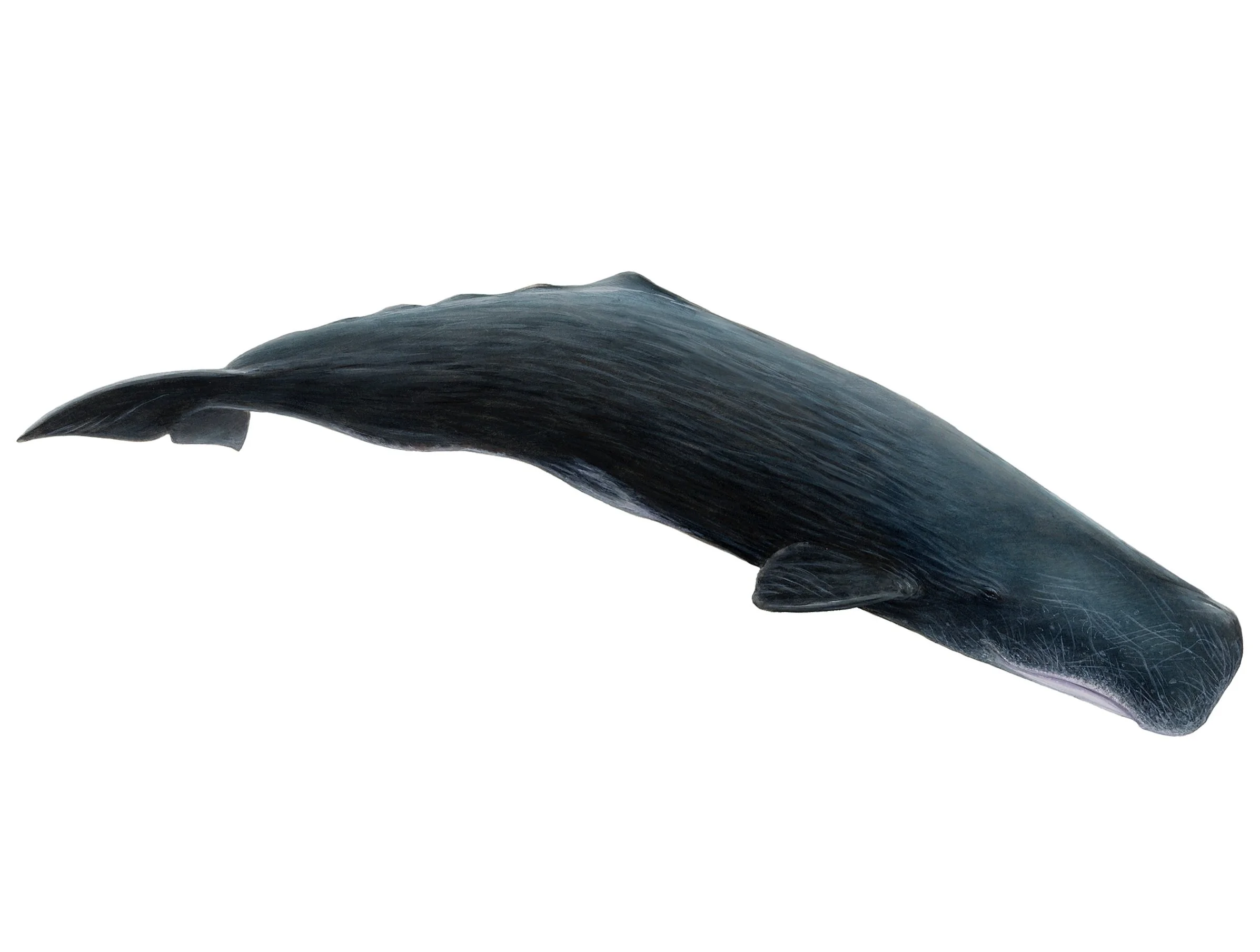
Welcome to our guide to the whales of Eyjafjörður - North Iceland’s spectacular whale watching haven. From the curious minke whale to the awe-inspiring humpback, Eyjafjörður provides sanctuary to a number of individuals that we’ve come to know well over the years.
The Magnificent Wildlife of Eyjafjörður
-

The Whales of Eyjafjörður
Eyjafjörður is one of the best places in Iceland to observe whales in their natural habitat. The deep, sheltered fjord provides ideal feeding grounds during the summer months, attracting both migratory and resident cetaceans. Each season brings a different mix of species, behaviours, and encounters, making whale watching here a truly dynamic experience.
Summer is the prime time for whale sightings, with long days and rich waters drawing in humpback whales, dolphins, and porpoises, while winter brings quieter conditions and more elusive visitors. Our team has spent years documenting individual whales and learning about their movements, behaviours, and social lives - each tour offering the chance to witness something new.
The species we most commonly see on our tours are Humpback whale, Minke whale, White-beaked dolphin, Harbour porpoise, but occasionally we will see other species such as Northern bottlenose whale, Orca, Sperm whale, Blue whale and more!
-

The Birds of Eyjafjörður
Eyjafjörður is not only a haven for whales and dolphins - it also boasts some of Iceland's richest and most varied birdlife. Each season paints a new picture, with migratory species arriving to breed, feed, or rest during their journeys across the North Atlantic. Summer brings a spectacular display of seabirds gathering on cliffs, skerries, and shorelines, while winter cloaks the fjord in a quieter but no less beautiful array of hardy resident species.
Birdwatching in Eyjafjörður is a year-round experience, offering ever-changing colours, sounds, and behaviours. Whether you’re spotting puffins flying low over the water or catching sight of a diving loon in winter, there's always something to observe.
The birds we can expect to see on our tours, from vibrant summer visitors to tough winter dwellers are Atlantic Puffin, Common Eider Duck, Arctic Tern, Great Cormorant, Northern Gannet, Common Guillemot, Northern Fulmar, Iceland Gull, Glaucous Gull, Herring Gull, Arctic Skua, Razorbill, Long-tailed Duck, Greylag Goose.
The Whales of Eyjafjörður
-

Blue whale
The blue whale is the largest animal on Earth, growing up to 30 metres long. These gentle giants feed on tiny krill and can be seen in oceans around the world. Though once hunted to near extinction, blue whale populations are slowly recovering thanks to global protection efforts.
-

Fin whale
The fin whale is the second-largest animal on Earth, reaching lengths of up to 27 metres. Sleek and fast, it is known as the “greyhound of the sea”. Fin whales have a distinct ridge along their back and an asymmetrical jaw colouring. They feed on krill and small fish and are seen regularly in Iceland.
-

Humpback whale
The humpback whale is a large and acrobatic baleen whale known for breaching and slapping its fins and tail. It migrates thousands of kilometres between feeding and breeding grounds and is famous for its songs. Humpbacks feed mainly on small fish and krill and are often seen in coastal waters.
-

Minke whale
The minke whale is the smallest baleen whale in the North Atlantic, reaching up to 10 metres in length. It is known to be fast moving and quite elusive. It feeds on small fish and krill and is most often seen alone or in very small groups. Minke whales are one of the most common whale species in Iceland.
-

White-beaked dolphin
The white-beaked dolphin is a robust and energetic species found in the cold waters of the North Atlantic. Easily recognised by its short white beak and tall dorsal fin, it often travels in pods and is known for bow-riding and leaping. These dolphins feed on fish and squid and are frequently seen near the Icelandic coast.
-

Long-finned pilot whale
The long-finned pilot whale is a highly social and intelligent species found in the North Atlantic. Recognisable by its bulbous head and long, slender flippers, it travels in tight-knit pods. These whales feed mainly on squid and can dive deeply in search of food. They are occasionally seen in Icelandic waters, often in large pods.
-

Orca (Killer whale)
The orca is a powerful and intelligent apex predator found in oceans worldwide, including around Iceland. Easily identified by its black and white markings and tall dorsal fin, it lives in social groups called pods. Orcas have diverse diets and hunting techniques, making them one of the most adaptable marine mammals.
-

Northern bottlenose whale
The northern bottlenose whale is a deep-diving beaked whale found in the North Atlantic. It has a bulbous forehead, a dolphin-like beak, and can reach up to 10 metres in length. Known for its curiosity around boats, it feeds mainly on squid and is capable of diving to great depths for over an hour.
-

Harbour porpoise
The harbour porpoise is one of the smallest marine mammals, reaching up to 2 metres in length. Shy and elusive, it is often seen alone or in small groups near coastal areas. It has a small, triangular dorsal fin and feeds on fish and squid. Harbour porpoises are common in Iceland all year-round.
-

Sei whale
The sei whale is a sleek and fast baleen whale, reaching up to 20 metres in length. It has a dark back, upright dorsal fin, and often leaves a low, bushy blow. Sei whales feed on krill and small fish by skimming through the water. They are occasionally seen in Icelandic waters during the summer months.
-

Sperm whale
The sperm whale is the largest toothed whale, known for its massive square head and deep-diving ability. Males can reach over 16 metres in length. They feed mainly on squid, including giant squid, and use echolocation to hunt in deep waters. Sperm whales are occasionally seen off Iceland, usually alone or in small groups.
-

Atlantic white-sided dolphin
The Atlantic white-sided dolphin is a striking and energetic species found in the cold waters of the North Atlantic. It has a bold pattern of yellow, white, and grey along its sides and travels in lively groups. These dolphins are fast swimmers, often leaping and bow-riding, and feed on fish and squid.
